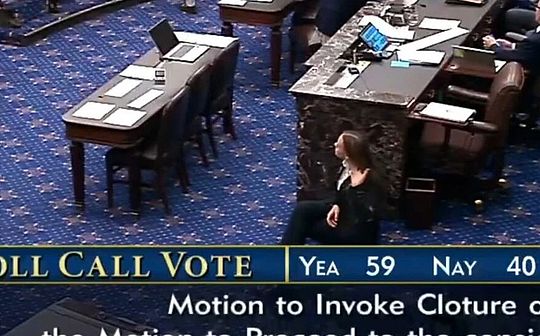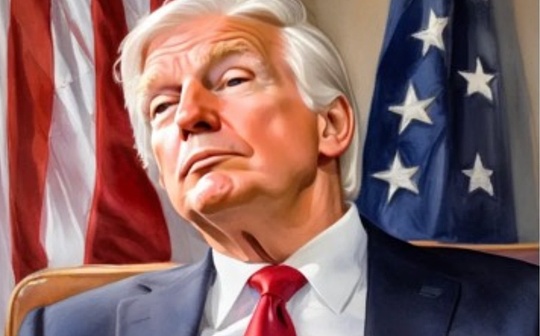
Author: Thejaswini MA Source: Token Dispatch Translation: Shan Oppa, Bitchain Vision
In 1688, the captains would gather in Edward Lloyd’s cafe in London to find those willing to provide insurance for their voyage.Rich businessmen will sign their names under the details of the ship and become “insured” and use their personal wealth to support these high-risk voyages.
The more prestige the insured, the safer the voyage will be for everyone.The safer the system, the more business it can attract.The logic is simple: provide capital, reduce overall risks, and share profits.
Seeing the new guidance from the Securities and Exchange Commission, it is obvious that the crypto industry is actually digitizing the underwriting model in those cafes – people make profits by allowing their assets to take risks, while also making the entire system safer and more trustworthy.
Pledge.Yes, it’s back.
What happened on May 29, 2025?That day, the US government made it clear that pledge would not cause you to get into legal trouble.First, we need to review why this issue is particularly important at the moment.
In staking, you lock the tokens to help the network run safely and get stable returns.
Verifiers will use their own pledged tokens to verify transactions, propose new blocks, and maintain the normal operation of the blockchain.In return, the network will pay them with newly issued tokens and transaction fees.
Without a staker, a Proof of Stake (PoS) network like Ethereum will crash.
In the past, you could certainly pledge tokens, but no one knew whether the SEC would come to you one day, saying that you were engaged in “unregistered securities issuance”.This regulatory uncertainty has left many institutions with the ability to wait and see retail pledges earning 3-8% annual returns.
Epic pledge craze
On July 3, the Rex-Osprey Solana + Staking ETF was launched, becoming the first crypto ETF in the United States to provide staking income.The fund holds SOL through its Cayman subsidiary and pledges at least half of it.
“The first pledged crypto ETF in the United States,” Rex Shares announced.
Moreover, they are not alone.
Robinhood has launched crypto staking for US users, starting with Ethereum and Solana.Kraken has added Bitcoin staking function through Babylon Protocol, allowing users to earn profits on the BTC main chain.VeChain launches a $15 million StarGate staking program.Even Bit Digital will completely throw away all Bitcoin mining business and focus on Ethereum staking.
What has changed?
Two regulatory domino cards
First, the U.S. Securities and Exchange Commission (SEC) pledge released in May 2025guide.
It says if you invest your own cryptocurrency to help run the blockchain, it’s totally OK and is not considered a venture capital or a security.
This covers individual pledges, delegating tokens to others or staking through trusted exchanges, as long as your pledge is directly helpful to the development of the network.This will disconnect most pledge behaviors from the definition of “investment contract” under the Howe Test.This means you no longer have to worry about the possibility of accidentally breaking complex investment laws by simply staking and receiving rewards.
The only red flag here is someone who promises to guarantee profits, especially when mixing pledges with borrowing or publishing fancy terms such as DeFi bundles that guarantee returns or earning farming.
second,CLARITY Act.
This is a legal proposal proposed by Congress to clarify which government agencies are responsible for different digital assets.The proposal aims to protect users who only run nodes, stake or use autonomous custodial wallets, from being treated like Wall Street brokers.
The bill introduces the concept of “investment contract assets,” a new category of digital commodities and sets standards for when digital assets are regulated as securities (SEC SEC) or commodities (CFTC by the CFTC).The bill sets up a process to determine when a blockchain project or token “mature” and can be regulated from the SEC SEC SEC to the CFTC CFTC, while also setting time limits for SEC SEC reviews to prevent indefinite delays.
What does it mean to you?
Because of the new SEC guidance, your confidence in pledging cryptocurrencies in the United States has been greatly improved.If CLARITY Act finally passes, the environment for staking and crypto actors will become more clear and secure.
Of course, pledge rewards are still taxed on ordinary income when you gain “sovereign control”; if you sell these rewards in the future, you also have to pay capital gains tax.All pledge income, regardless of the amount, must be reported to the IRS.
Who is the focus?Ethereum
What about the price?It’s still about $2500.

The price performance did not make people shine, but Ethereum’s pledge indicators have undergone significant changes.The number of pledged ETH has just hit a record high, with more than 35 million, accounting for nearly 30% of the total circulation.While this accumulation has been going on for several months, all of these infrastructures suddenly become significant in today’s environment.
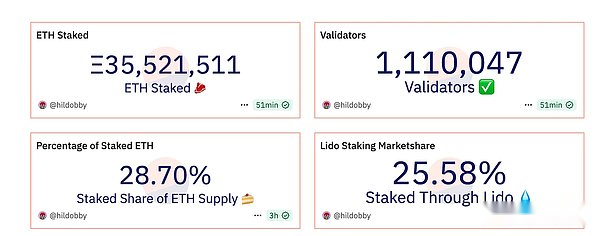
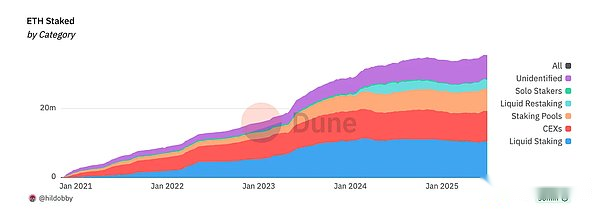
What happened on the board of directors of a company?
BitMine Immersion Technologies has just raised $250 million to buy and pledge Ethereum, with Tom Lee of Fundstrat serving as chairman.The company bets on pledge rewards combined with potential price appreciation, which will outperform traditional company capital management assets.
SharpLink Gaming has added to this strategy, expanding their Ethereum reserves to 198,167 and staking 100% of their positions.In the week of June alone, they earned 102 ETH through pledges.Just locking the position will bring you “free money”.
Meanwhile, the issuers of the Ethereum ETF are queueing for pledge approval.Bloomberg analysts expect the probability that these pledged ETFs will receive regulatory approval in the coming months is 95%.BlackRock’s digital assets head said that pledge was a “giant leap” for Ethereum ETFs, which is likely to be right.
If approved, these pledged ETFs have the potential to reverse the ongoing outflow of Ethereum funds since its issuance.Why just have price exposure instead of price exposure + income?
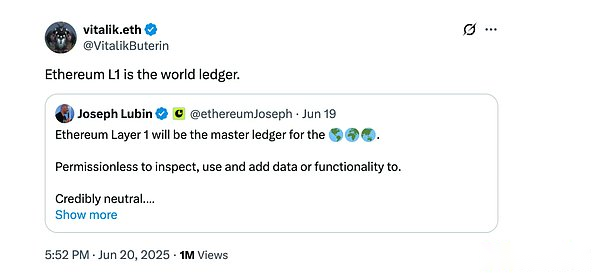
Encryption is speaking language that Wall Street understands
For years, traditional finance has struggled to understand the value proposition of crypto.Digital gold?Maybe.Programmable currency?Sounds complicated.Decentralized application?What’s wrong with centralized?
But the profit?Wall Street understands profits.
Of course, Treasury yields have rebounded from near zero levels in 2020, with one-year Treasury returning to around 4%.But can a regulated crypto fund generate an annual pledge income of 3-5%, and it also comes with potential upside potential for underlying assets?This looks very attractive.
It’s about legitimacy.When pension funds can buy Ethereum exposure through regulated ETFs and earn profits by helping cybersecurity, that’s a big deal.
This network effect is already visible.As more institutions participate in staking, the network will become safer; the network will be safer, which will attract more users and developers; the adoption rate will increase, and the transaction fee will increase, and the pledge reward will be increased.This is a virtuous cycle that benefits all participants.
You don’t need to understand blockchain technology or believe in decentralization to appreciate an asset that “pays you because you hold it.”You don’t need to believe in Austrian economics or distrust the central bank to understand that such assets are “productive capital.”You just need to understand that the network needs to be secure and security providers deserve to be paid.



